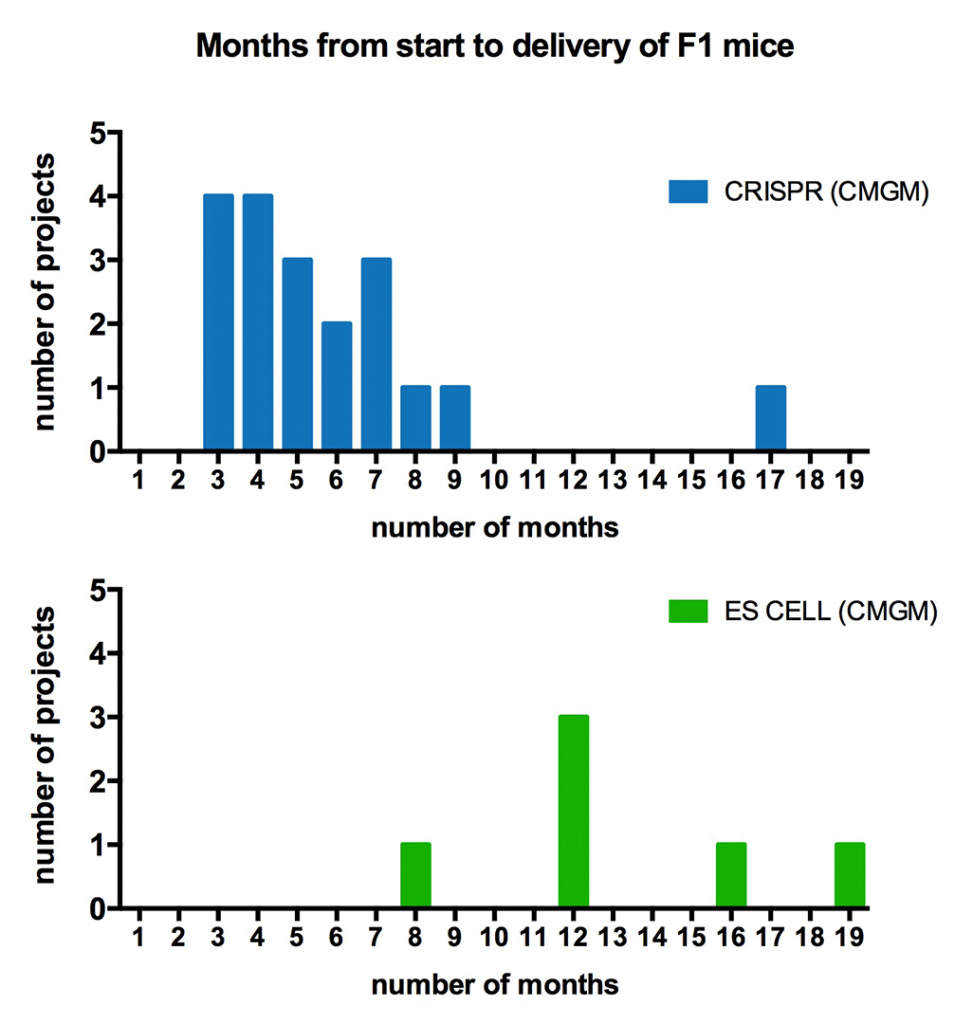
The decision to use CRISPR or ES cells to generate genetically modified mouse strains depends largely on the genomic structure of the gene of interest and the nature of the specific modification such as KI, KO, cKO or cKI etc. In general CRISPR is faster and less expensive, so it is the first choice when possible. Most CRISPR projects take 3-7 months to obtain F1 mice, whereas ES cell projects typically take a year or more.
CRISPR
We have successfully produced different novel mouse strains with gene specific KO, KI (insertions of DNA fragments up to 9kb), point mutations, precision deletions (removal of specific introns), and other novel mouse strains using CRISPR mediated gene editing directly in early mouse embryos.
What Do We Need
- ID of the gene of interest such as MGI no, gene ID or Genbank accession no
- Specific genome modification
- Completed request form
What Will We Do
- Design and preparation of CRISPR reagents, donor vector or ssDNA
- Test efficiency of sgRNA in early mouse embryos
- Perform microinjection of CRISPR reagents and donor template into one-cell embryos
- Genotyping live born pups to identify potential founders
- Breeding founders to generate F1 pups and PCR sequencing for confirmation
We will deliver positive F1 pups. We cannot guarantee positive founders or F1 pups if the specific genome modifications severely compromise the viability or fertility of the founders.
Gene Targeting in ES Cells
The Center for Mouse Genome Modification (CMGM) uses an in-house ES cell line derived from F1(C57BL/6j x 129sv) embryos for gene targeting. This ES cell line is germline competent and will be used for electroporation of the targeting vector.
What Do We Need
- ID of the gene of interest such as MGI no, gene ID or Genbank accession no
- Specific modification
- Completed request form
What Will We Do
- Design and construction of targeting vector
- Preparation of targeting vector for electroporation
- Electroporation of ES cells, drug selection, pick drug resistant colonies and preparation of DNA plates for screening
- Expand positive ES clones for genotyping confirmation
- Generate chimeric animals by ES<->morula aggregation
- Breeding chimeric animals to remove drug resistant cassette
- Genotyping to identify positive F1 pups
We will pick and screen 192 (equivalent to 2 x 96 well plates) drug resistant clones. We guarantee germline transmission if we perform all procedures and use our in-housed derived ES cell line for electroporation.
Please contact the Center for Mouse Genome Modification if you would like to provide us with the targeting vector or use other ES cell line/clones and other details.